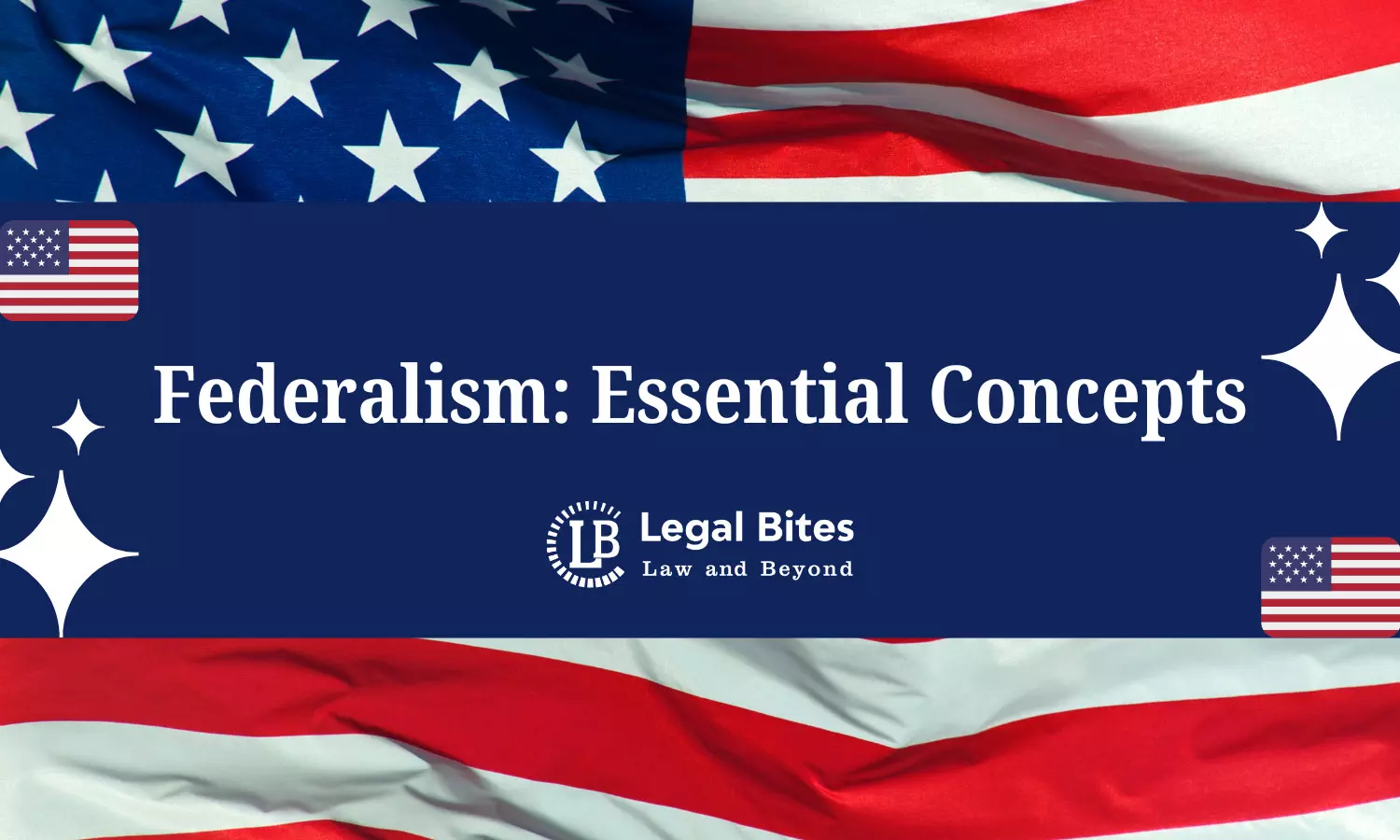Federalism: Essential Concepts
Read the concept of federalism to understand how different countries structure and balance the relationship between central and regional government.

Federalism in comparative constitutional law examines the distribution and balance of powers between national and subnational governments across different legal systems, highlighting the diversity in the practice and structure of federalist principles.Introduction: FederalismFederalism is derived from the Latin word “Foedus” which means covenant. It refers to a government system where power is divided between a central government and subunits, which may be states or provinces. Authority...
Federalism in comparative constitutional law examines the distribution and balance of powers between national and subnational governments across different legal systems, highlighting the diversity in the practice and structure of federalist principles.
Introduction: Federalism
Federalism is derived from the Latin word “Foedus” which means covenant. It refers to a government system where power is divided between a central government and subunits, which may be states or provinces. Authority is shared to a minimum extent between the two levels. This means the citizen is not only politically obligated to the central, but also the subunits of the government. Ideally, the central government handles defence and foreign policy matters, while the subunit manages the local administration or trade.
In such a system, the same territory is governed by two levels of government, a national government for country issues and a smaller sub-division for the local issues. Both levels can make clauses and have a certain degree of autonomy.
In simple words, the federal government divides its power between the central government and the state government in which each level has authority in some areas and shares its powers in others
Types of Federalism
Dual Federalism:
Dual Federalism indicates proper separation of powers between central and state government. Each Government works within its sphere of work to avoid any overlapping of responsibilities.
Cooperative Federalism
In this type of government, central and state governments share responsibilities and policy-making. Both levels of Government work cooperatively to address policy issues.
Competitive Federalism:
The primary focus of this kind of government is creating competition among states or subnational units. The purpose is to attract businesses, residents, and investments by offering different regulatory environments, tax policies, or public services.
Fiscal Federalism:
Fiscal federalism emphasises various aspects such as the distribution of financial resources and taxation powers between the central government and subnational units
Federalism in Different Constitutional Frameworks
(i) Federalism in United States
The federal system in the United States of America was primarily designed for the effective management of disputes between the states and also to ensure that the states could maintain their unique identities within the federation. The system was not only established with the creation of the US Constitution, but its key features also include the written Constitution, the first of its kind in the world, consisting of 7 articles and 27 amendments. The Constitution of the US is rigid and requires a 2/3rd of the majority of the house of the Congress and the ratification by at least 75% of the state legislature for the amendment.
It is the supreme law with all the government action being subject to its provision. The United States of America also operates a dual polity system where the federal government handles matters such as defence, currency and foreign trade. While the state government manages, the issues which lie within the local limit, the distribution of power is clearly outlined with the Subjects under federal control.
Some are reserved for states and the doctrine of implied powers, allowing the federal government to execute Constitutional duties effectively. The judiciary is, however, independent with the power of proper judicial review, ensuring laws and executive actions comply with the Constitution. The bicameral legislature comprises the Senate and the House of Representatives.
(ii) Federalism in Canada
Canada is a federation which is made up of 11 main parts. It includes the national government of Canada along with 10 provincial governments. All these governments get their authority from the Constitution of Canada, which is the supreme law of the country.
Along with that, there are three territorial governments in the far north with the powers given by the federal Parliament and municipal government with the power given by the province or territories. Each level of the government operates independently within its area of responsibility. The division of powers between the federal and the provincial government is very clear, all matters are assigned to either the federal Parliament or the provincial legislature
(iii) Federalism in India
India has a concept of federalism adopted from the US Constitution, adapting it to its unique circumstances. The drafting committee of the Indian Constitution chose this very system of federalism to unite the diverse British provinces and the native state which varied significantly in languages and cultures. This made the unitary system very much impracticable, which made the necessity for decentralisation to preserve the regional identities
The federal government was outlined in the Government of India Act of 1935. The system highlights the distribution of powers between the central government and the state government. It also accommodates the country's diversity, ensuring effective governance. Indian federalism is inspired by the US model. It was tailored to meet the specific social political economic condition that prevailed at the time of independence in India
The constitution of India is neither purely federal nor purely unitary but is a combination of both
(iv) Federalism in Australia
Australia's government can best be characterized as a Federal Commonwealth. Australia's Federal Parliament consists of the Crown, Senate and House of Representatives. The Executive power of the Crown is vested in the Governor General, who is the Monarch's representative. The Governor General acts on the advice of a Federal Executive Council composed of ministers of state, chosen and summoned by the Governor General upon the advice of the Prime Minister. Officers of the Executive Government must be members of the Parliament. The Executive Government is wholly responsible to the Parliament.
Conclusion
Federalism ensures the decentralization of power. Federalism encourages accountability of the government and thus provides citizens participation. Federalism can be considered as a compromise between the extreme concentration of power and a loose confederation of independent states for governing a variety of people. Federalism generally operates effectively under a written constitution.
References
[1] M. P. Jain, Some Aspects of Indian Federalism, Available Here
[2] Comparing The Model Of Federalism In India And The U.S.: A Constitutional Perspective, Available Here
[3] Dr Rahul Tripathi, Federalism: Concept and Its Importance in Democratic System, Available Here
[4] The Australian Constitution: The External Affairs Power and Federalism, Available Here

Deepa Bajaj
A third-year student pursuing BBA LLB (Hons.) College: SVKM'S Narsee Monjee Institute of Management Studies. Having a strong passion for writing along with a deep understanding of legal concepts
